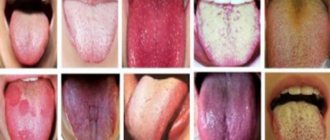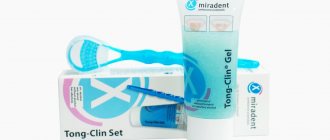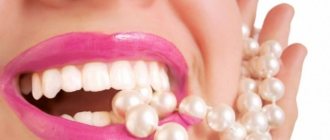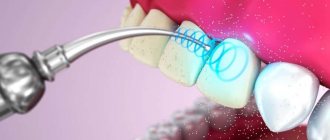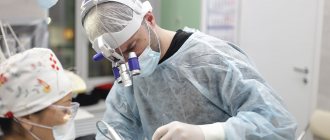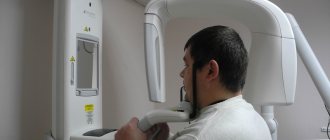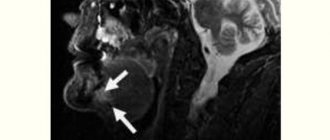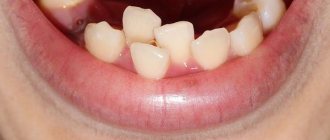Yellow skin color is a common phenomenon that can result from many factors. Such pigmentation in an adult does not always have negative consequences, as it can appear due to the food consumed. However, yellowed skin can indicate diseases of the liver, blood and gall bladder, which entails serious consequences for the body.
For this reason, it is necessary to carefully monitor your health and promptly seek help from a doctor.
Causes of yellow skin
Yellow skin color in an adult may indicate the presence of both serious pathologies and digestive problems. Bilirubin, which is a breakdown product of hemoglobin, is responsible for the yellow color of the epidermis. The latter, in turn, transports oxygen in the body.
The pigment bilirubin is formed in the liver as a result of the decomposition of red blood cells. In some cases, an increase in pigment content leads to blockage of blood vessels and bile ducts, liver pathologies, and the formation of gallstones. In addition to yellowing of the skin, increased bilirubin gives a yellow tint to the sclera of the eyes and the surface of the tongue.
Yellow facial skin is observed when the cardiovascular system and lipid metabolism are disrupted. Another cause of pathology is a sudden change in diet, problems with metabolism and high cholesterol in the blood. Yellowing of the skin can be a reaction of the body to vegetable salads, juices or fresh juices with a high content of carrots, pumpkin, orange or tangerine.
Excessive intake of various spices
Excessive intake of various spices, fatty and spicy foods can provoke stagnation of bile, which subsequently affects the condition of the skin. Unhealthy skin tone appears as a result of an unbalanced diet, after prolonged fasting, alcohol and drug abuse.
In addition to the above reasons, pathology can be caused by:
- serious physical activity;
- stressful situations, depression and emotional shock;
- prolonged insomnia;
- pathologies of the digestive tract;
- hormonal imbalances;
- the body's reaction to exposure to the sun.
Among the serious disorders are malfunctions of the endocrine system, as a result of which the thyroid gland suffers. The environmental situation in the place where a person lives also affects the appearance and condition of the skin. The presence of a large number of enterprises in the city and work in such places over time can lead to disorders of various organs of the human body.
Yellowing of the sclera after alcohol intoxication
Yellow eyes are a sign of pathology of the digestive system
Cases when jaundice develops due to poisoning deserve special attention. A striking example is the yellowing of the sclera after alcohol intoxication.
As a rule, excessive amounts of alcohol consumed provoke improper liver function and, as a result, bilirubin accumulates in the body.
This condition does not require profile neutralization, since it is a natural reaction of human internal organs to poisoning.
In addition to alcohol intoxication, jaundice can be caused by:
Types of diseases with yellow skin color
Yellow skin color in an adult may appear as a result of the following pathologies:
- Cholecystitis. This disease is characterized by acute inflammation of the gallbladder. As a result, stones are formed that block the gallbladder and the exit of bile.
- Intestinal worm infection. The appearance of roundworms in the human body is associated with poor hygiene and the consumption of unwashed vegetables. The worm often parasitizes the liver, which causes unhealthy skin color along with other problems.
- Hemostatic spherocytosis is a pathology that destroys and deforms red blood cells. As a result, a person has yellowish skin and sclera of the eyes, as well as an enlarged spleen.
- Gallstones. They are solid deposits that vary in size, shape and composition.
Gallstones - Sickle anemia is a hereditary pathology that leads to the formation of an abnormal form of hemoglobin protein. Due to excessive breakdown of hemoglobin, patients often experience jaundice.
- Mononucleosis is a disease caused by a virus. It often manifests itself in the form of fever, with plaque forming on the tonsils, enlarged lymph nodes, liver and spleen. Yellow skin is one of the manifestations of infection.
- Hepatitis C is an inflammation of the liver caused by a virus that enters the human body through the blood. Experts call the virus a “gentle killer,” since the disease may not manifest itself for a certain time, and the infected person lives quietly, unaware of the presence of pathology in the body.
- One of the main causes of yellow skin is liver disease. Among them are: cirrhosis, hepatitis, Gilbert's syndrome. They all have different reasons for their appearance and the nature of their course. However, what unites a group of diseases is the destruction of the main human organ.
Cleaning methods
Let’s make a reservation right away: the following cleaning methods only work for jewelry and items made of real silver. If you have a fake, these methods are unlikely to return the product to its original appearance.
How to tell if it's fake or not: silver cannot turn yellow too quickly. If the chain turns yellow within a week, it is an obvious fake.
So, how to clean yellowed silver:
- The first and safest method is to wash your jewelry in soapy water. Soapy water can remove dirt and grease accumulated in curls, remove yellowness and return the product to a unique silvery shine. In addition, this procedure is also suitable for jewelry with stones and rhodium plating.
- Second, you can use baking soda. Baking soda seems to be a universal cleaner for everything and can easily remove tarnish on silver.
But microparticles of soda powder can scratch the silver coating and this cannot be corrected. To protect the surface and at the same time remove yellowness, make a thick paste (soda + water) and massage the product with this soft mass until it is clean.
- The third and proven method is to use toothpaste. Toothpaste (without abrasive particles) or tooth powder (but also only in the form of a paste) perfectly removes yellowing on silver and adds shine and shine. You can smear a soft cloth or cotton pad with the paste and walk over the silver items.
- Well, the fourth, old-fashioned method is ammonia. Let us remember right away that we do not wipe products with stones and organic inserts with alcohol solutions. In other cases, add about 1 spoon of ammonia to the water and soak the items for 20-30 minutes. Then rinse with plain water and dry.
These were the most common and effective methods for removing the yellowish tint from silver items. Remember that after using any of the methods described above, the silver must be rinsed thoroughly and allowed to dry. After the cleaning procedure, it is better to leave the jewelry “alone” for 2-3 days.
Stages and degrees of diseases with yellow skin color
Depending on the cause of the disruption of bilirubin, jaundice is divided into 4 types:
- hemolytic (suprahepatic);
- hepatic;
- mechanical;
- carotene
The simplest and most non-dangerous type is carotene jaundice. The reason for its appearance lies in the consumption of foods high in carotene. As a result, a person's feet and palms may turn yellowish. This condition is safe and the symptoms go away on their own after a few hours.
The hemolytic form is characterized by a violation of the integrity of red blood cells; bilirubin accumulates in the body and is not excreted in a timely manner, which leads to the development of pathological conditions. As a result, anemia, lymphocytic leukemia, and lymphosarcoma may appear. Another reason for the appearance of the hemolytic form is improper use of medications.
Yellow skin color in an adult
Hepatic jaundice appears due to infection, virus, fungus , excessive consumption of alcohol, drugs, and malignant tumors. This disrupts the functioning of liver cells and increases the bilirubin content in the blood.
Obstructive jaundice is characterized by tissue staining due to hyperbilirubinemia, which occurs due to obstruction of the bile ducts. Causes of the pathology: malignant formations, cholelithiasis, advanced form of cholecystitis. Due to stagnation of bile, the body poisons itself and poisoning occurs.
Depending on the concentration of bilirubin in the blood, three degrees of jaundice are distinguished:
- mild - up to 86 µmol/l;
- moderate-87-168 µmol/l;
- severe - more than 169 µmol/l.
The brightness of the coloring of the skin and mucous membranes depends on the normal color of the skin, the concentration of bilirubin and the nature of the blood supply to the tissue. First of all, the yellow color appears on the sclera of the eyes, and with time pigmentation appears on the skin.
In what cases does silver not turn yellow?
I would like to say that in none, but still there is one case - pure silver. That is, without any impurities. At all. But, unfortunately, jewelry, cutlery and decorative items are not made from such silver. Pure metal is used only in precious bars and less often in coins.
The highest standard from which silver items for sale are made is 960. And even this is an alloy. It contains 96% pure silver and 4% copper or other metals. Impurities are added to silver to improve mechanical properties and strength. Pure silver is very soft and plastic in its shape; it is physically impossible to make an elegant necklace or thin ring from it - the products simply will not hold their shape.
Therefore, to summarize, any silver items will become covered with a yellowish coating over time, unless, of course, you take care of them.
Symptoms of diseases with yellow skin color
Yellow skin color in an adult is characteristic of various diseases, the symptoms of each of them have their own distinctive features and characteristics:
Symptoms of cholecystitis:
- abdominal pain;
- nausea, vomiting;
- poor appetite;
- diarrhea, constipation;
- heaviness in the right side;
- bitterness in the mouth.
Cholecystitis
Symptoms of intestinal worm:
- abdominal pain;
- nausea, vomiting;
- bloody stools, diarrhea;
- in some cases allergic rash;
- fatigue;
- in advanced stages, roundworms become noticeable in vomit and stool.
Symptoms of hemostatic spherocytosis:
- constant feeling of fatigue;
- abdominal pain;
- fever
Symptoms of gallstone disease:
- loss of appetite;
- nausea;
- sudden weight loss;
- pain in the right side;
- bitterness in the mouth;
- belching.
Symptoms of sickle anemia:
- attacks of pain;
- leg ulcers;
- decreased visual acuity;
- swelling of fingers or toes;
- fatigue.
Sickle anemia
Symptoms of chronic hepatitis C:
- weakness;
- nausea;
- muscle and joint pain;
- poor appetite;
- discomfort in the upper abdomen.
Symptoms of mononucleosis:
- fatigue;
- headache;
- poor appetite;
- abdominal pain;
- increased body temperature;
- a sore throat.
Diagnosis of diseases with yellow skin color
In order to establish the cause of the appearance of yellow skin in an adult, a specialist must conduct a comprehensive examination, which includes:
- taking an anamnesis, during which the doctor studies the patient’s symptoms and complaints;
- a physical diagnosis is carried out, which includes palpation of internal organs and external examination of the patient;
- to study the condition of internal organs, ultrasound or computed tomography is prescribed;
- A biochemical blood test is carried out, as well as a clinical analysis of blood and urine.
CT scan
You can undergo the examination at a clinic at your place of residence.
Diagnostic prices are presented in the table:
| Procedure | price, rub. |
| Bilirubin test | 160-250 |
| General blood analysis | 200-270 |
| Alkaline Phosphotophase Assay | 130-190 |
| ALT analysis | 190-250 |
| Ultrasound of internal organs | 2150-2650 |
| CT scan | 4000-6500 |
When to see a doctor
When yellowing of the skin appears, first of all you need to listen to the general condition of the body. If no symptoms are observed, perhaps the cause lies in poor diet and digestive problems. If skin pigmentation does not subside within several days, a person should consult a therapist.
The doctor will conduct an initial diagnosis, during which a further treatment plan will be prescribed.
When to see a doctor
Depending on the disease, the patient will need the help of doctors of a more narrow specialization:
- gastroenterologist;
- infectious disease specialist;
- hematologist;
- endocrinologist.
Oxidation
Silver turns yellow slowly, but this process still occurs. Jewelers, of course, are aware of this problem, and in order to somehow delay the appearance of yellowness, they came up with the idea of covering silver items with a thin film of rhodium.
This metal is rare and therefore very expensive. The price per troy ounce (31.1 grams) is over $10,000. Previously, rhodium was added to platinum, but later they decided to do rhodium plating on silver.
Rhodium is a metal that, due to its properties, protects silver from entering into a chemical reaction with environmental components. But the rhodium plating wears off over the years. And the jewelry gradually develops first a yellow, then a gray, and finally a black coating.
If it is difficult to remove blackness on your own at home, then anyone can cope with yellowness. You just need to follow our instructions carefully.
Prevention of diseases with yellow skin color
To prevent diseases, you must adhere to the following rules:
- lead a healthy lifestyle;
- to refuse from bad habits;
- eat healthy food and watch your diet;
- exercise;
- go for walks;
- maintain a daily routine;
- An important point is facial skin care, which consists of using nourishing masks and other cosmetic procedures;
- When the first symptoms appear, you should consult a doctor, as timely treatment helps to quickly overcome the disease and prevent complications.
Methods of treating diseases with yellow skin color
Before prescribing treatment, it is necessary to determine the cause of the pathology. To do this, consultations are carried out with specialists who, during the course of research, prescribe a rehabilitation plan. Often, in addition to taking medications, a diet is necessary that is aimed at normalizing the functioning of internal organs.
Medications
For pathologies caused by viruses, the following drugs are used:
- Ribavirin. Available in the form of tablets and capsules. Do not use during lactation, pregnancy, during recovery after myocardial infarction, or for problems with the thyroid gland. Side effects include: headache, nervousness, high blood pressure. Take 1 tablet 2 times a day. The duration of treatment is at least 4 months. Price from 94 rub.
- Sofosbuvir. It is used to treat hepatitis C in combination with other drugs. Available in tablet form. Take 1 tablet per day with meals. Duration of treatment is 3 months. The drug is often easily tolerated and has no side effects. It is prohibited for use by pregnant women, as well as during lactation and in the presence of individual intolerance to the components. Price from 4000 rub.
Ribavirin
To improve digestion processes the following are prescribed:
- Mezim Forte. Available in tablet form. Used to eliminate eating disorders and improve metabolism. Contraindications include: pork allergy, intestinal obstruction and pancreatitis. Side effects: diarrhea, abdominal pain, nausea. Take 2 tablets 1 time per day with meals. The duration of treatment is prescribed individually by the doctor. Price from 150 rub;
- Creon. Available in capsule form. Refers to drugs that improve digestion. Contraindications include only individual intolerance to the components of the drug. Take 1 capsule 2 times a day after meals. The duration of treatment is prescribed depending on the stage and type of disease. Price from 250 rub.
- Pancreatin. Prescribed to eliminate pancreatic dysfunction and improve digestion. Take 2 tablets 3 times a day. Duration of treatment is at least 14 days. Side effects include allergic reactions. Contraindications: acute forms of pancreatitis. Price from 45 rub.
Traditional methods
Traditional medicine helps maintain skin tone and health:
- Curd mask. Ingredients: 3 tbsp. l. cottage cheese and 2 tbsp. l. sour cream. The components must be mixed and applied to the face. Keep the mask on for about 25 minutes and then rinse with warm water. For those with oily skin, sour cream can be replaced with kefir. Several procedures are necessary per week.
- Cucumber mask. Ingredients: chopped cucumber - 3 tbsp. l., olive oil-2 tbsp. l., pulp of 1 lemon. All ingredients must be thoroughly mixed and applied to the face. The mask is left for 20 minutes, then washed off with warm water. You can also cut the cucumber into slices and place it on your face, or wipe your skin with freshly squeezed cucumber juice. The procedure can be repeated 3-4 times a week.
- Berry mask. The following berries are suitable for making a mask: strawberries, raspberries, currants and viburnum. The mask is made from squeezed berry juice. Thanks to such procedures, complexion improves and dead cells are removed. Keep the mask on your face for about 10-15 minutes, then wash off with warm water and apply moisturizer. Repeat 2-3 times a week.
Other methods
Yellow skin color in an adult can indicate problems with internal organs, so proper nutrition plays a significant role. When compiling a diet, it is necessary to take into account the intake of vegetables and fruits, as well as their compatibility with each other.
Often, improperly selected food provokes constipation and diarrhea, which negatively affect the condition of the skin. Increased stress on the digestive tract causes pain and discomfort. One of the reasons for improper digestion is fatty, smoked and spicy foods.
Cheese, cottage cheese
Experts recommend consuming the following products:
- lean meats (rabbit, chicken, veal);
- eggs;
- cheese, cottage cheese;
- seafood;
- cereals;
- nuts;
- vegetable oil.
The following should be excluded from the diet:
- canned fish and meat;
- fried food;
- chocolate;
- cocoa and coffee;
- seasonings, spices;
- alcohol.
In addition to proper nutrition, it is important to maintain a drinking regime. You need to drink about 2 liters of water per day. You should choose only purified or spring water. Thus, the body removes toxins and harmful substances in a timely manner, and the skin has a healthy color.
Physical activity and walks in the fresh air have a beneficial effect on the condition of the skin. Regardless of weather conditions, experts recommend going outside every day for at least 15-20 minutes. Such a pastime relieves fatigue, fills the body with strength, and returns the face to a ruddy and fresh appearance.
Possible complications
Incorrect and untimely treatment of pathologies that cause yellow pigmentation of the skin can lead to:
- to rupture of the gallbladder, which is fatal to humans;
- if the body is infected with parasitic worms, intestinal obstruction, acute appendicitis, liver abscess or tissue sepsis may occur;
- gallstones can turn into acute cholecystitis, pancreatitis, and also form holes in the organ, which is dangerous for human life;
- improper treatment of anemia leads to liver failure, blindness, and capillary blockage;
- as a result of the development of mononucleosis, the following complications are identified: splenic rupture, bacterial infections, hepatitis, meningitis;
- cirrhosis, hepatosis and liver cancer.
Gallbladder rupture
Yellow skin color can be the cause of many diseases, some of which are deadly. In an adult, pigmentation spreads to the skin, sclera of the eyes and tongue. Since there is a possibility of a pathological process developing in the body, when the first symptoms appear, you should seek help from a doctor.
Yellowness of the face due to cancer. Obstructive jaundice in liver cancer: prognosis and treatment
Obstructive jaundice in cancer is manifested by yellowing of the skin, sclera and mucous membranes. The development of this pathology significantly complicates further treatment of a cancer patient and aggravates his condition. Diagnosis of this disease is made using non-invasive and invasive methods, and only surgical methods are used in treatment - palliative or radical surgery.
Obstructive jaundice due to liver tumor
Jaundice in cancer is a serious complication that is practically not amenable to drug treatment. The mechanism of formation of jaundice in oncology is quite simple and understandable: the cancerous tumor grows, gradually squeezing not only the blood vessels, but also the internal and external bile ducts. As a result, bile simply has nowhere to go, and it begins to accumulate in the vascular bed. Normally, it flows into the intestinal lumen, where it performs its beneficial functions. However, its excess in the blood, i.e., an increase in the concentration of bilirubin, creates extremely favorable conditions for further progression of the disease. Outwardly, the patient, first of all, will pay attention to the yellowing of the skin due to cancer: if before this the skin was pink, physiological, and perhaps pale, characteristic of oncological pathology, now it is yellowish, and sometimes nuclear yellow. If we are talking about a slight change in skin color, then relatives and the patient himself often mistakenly take this phenomenon as symptoms of some kind of improvement - the body’s adaptation to cancer; but in fact they have crossed another stage in the development of cancer.

